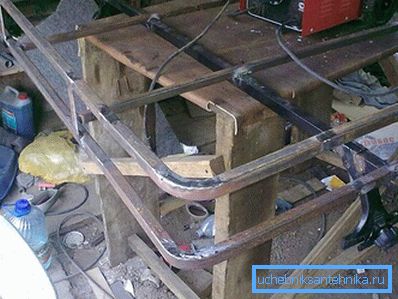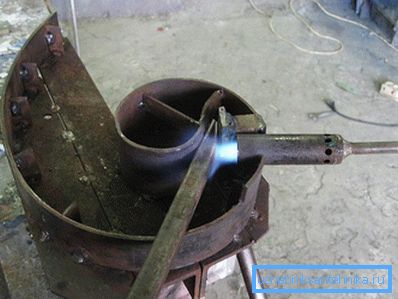How to bend a profile pipe
The development of production technologies has allowed the emergence of many easy-to-use materials that facilitate the implementation of many types of work. Profile pipes are a good example of such a material. They can be used to create a variety of frame structures. Pipes are available and convenient in work. However, sometimes there is a need for their bending, and there may be some problems. In this regard, we consider how to bend the profile tube.
First, it is necessary to give some general description of the problem and outline an approximate vector of searches for its solution. So, the main difficulties in bending metal shaped pipes lie in the fact that during the execution of a task by regular methods there is a crushing of the edge and the pipe loses its strength characteristics. However, the way out is not even one.
Pipe benders

As an example of the most common method of bending a profile pipe is the use of special devices called pipe benders. These devices may have a different structure and be set in motion by the physical efforts of a person or they may be electric. The principle of operation is similar. The pipe is inserted inside the device and is bent under the influence of the elements.
For example, there is a model whose principle of operation is based on the rotation of several rollers. Two of them are fixed horizontally fixed, and the third moves vertically. The pipe is laid on horizontal rollers and pressed against the third from the top. Then the rollers rotate (by the handle or by the electric motor) and the pipe, passing the entire length between them, acquires a slight bend. Next, the upper roller is pressed still, and the procedure is repeated. Thus, the pipe is bent to the required radius. I must say that this method is the easiest and safest, and the pipe bender can be made by hand.
Folk methods

Next, you should consider several ways of bending the profile pipe by folk methods.
Bulgarian

The first of these can be considered a variant using an angle grinder, and in colloquial "grinder" with an installed cutting disc for metal. The essence of the method lies in the fact that along the entire length of the pipe, a series of cuts is carried out, about a third of the thickness of the pipe section. Further, using any stationary object as an emphasis, the pipe is bent to the desired diameter. The gaps formed on the outer side of the bend are welded by electric welding, and the seams are cleaned. The method is more laborious than the one described above, and can hardly be used in the manufacture of decorative parts, but it is realistic to bend the pipe in this way, and if necessary it can be used.
Spring
Another popular method of pipe bending without a pipe bender is the use of a spring. It can be made of steel wire using a profile tube, the external cross section of which is somewhat less than the internal cross section of the bent. The wire is bent into the spring and inserted into the pipe. Next, the pipe is heated with a blowtorch before acquiring a characteristic scale and is bent over the stop, for example, an old car wheel disc. If necessary, the heating can be performed several times. The spring inside will create a certain resistance, and the edges will not hem. In order for the spring to be pulled out, a segment of the same wire can be fastened to one of its edges. It is undesirable to take the rope, because under the influence of heat it can burn out and the spring can not be pulled out. The situation is not critical, but if you need to bend more than one pipe, then you will hardly want to make a second spring. The method also requires effort, but is valid and can be used.
Warming up

Also, the pipe can be bent on a pre-prepared form. To facilitate the process of bending by heating the pipe with a cutter or a torch.
Ice
Another option for bending the profile pipe at home is to use ice. The method consists in the following - one end of the pipe is clogged with a stopper made, for example, of wood, after which water is poured inside. The second end of the pipe is similarly closed, and the pipe is left for some time in the cold. As a reference point, you can leave a container with water next to it. Water during freezing tends to expand, and therefore the internal pressure on the walls will allow avoiding wrinkles of the edge. The method, frankly speaking, is very exotic, and can hardly be used in the case when you need a beautiful and even bend, but if there is no other option, then it will do.
Each of these tasks has its pros and cons, but it works and can be used.
Video
This video shows how to bend profile tubes at 90 degrees in a specially designed machine:
This pipe bender can be easily made with your own hands: